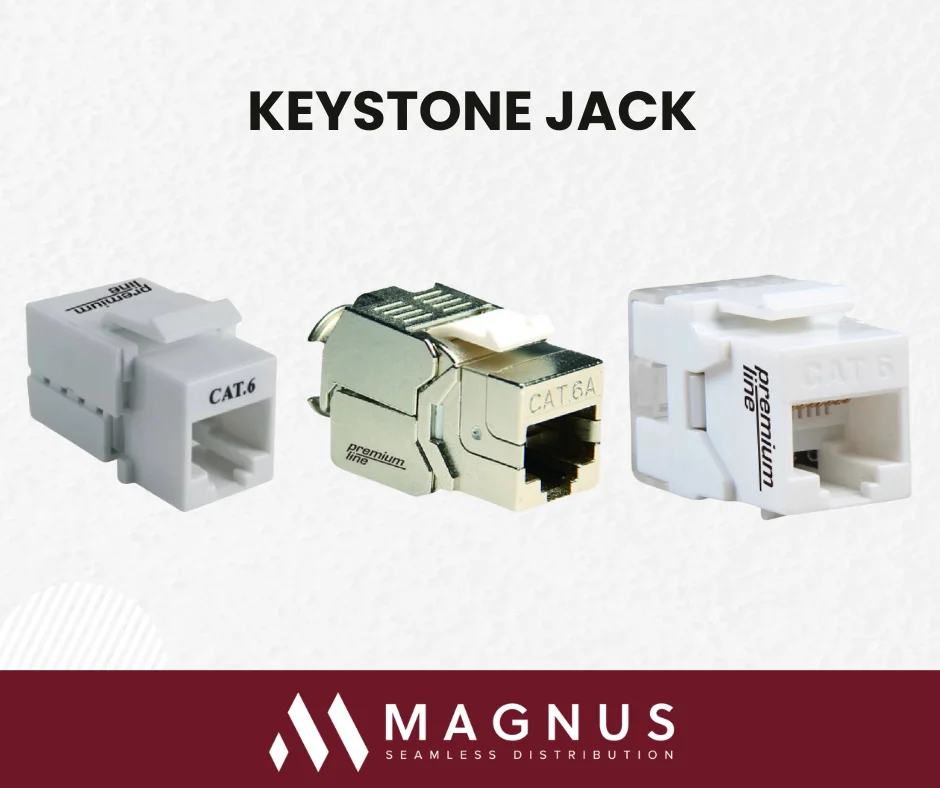In the intricate world of network cabling, keystones are the unsung heroes, facilitating the complex web of communications that underpins the modern digital age. Often overlooked in favor of more glamorous components, keystone jacks are the backbone, quite literally, of a reliable and high-performing network infrastructure.
In this comprehensive guide, we’ll shine a light on the keystone jack, dissecting its many layers and demonstrating why this unassuming piece of equipment is so important. Whether you are a seasoned IT professional, a tech enthusiast, or a system integrator, understanding keystone jacks is essential for ensuring the soundness of your networking architecture.
To the uninitiated, a keystone jack may appear as a simple square or rectangular module with various holes for connecting cables. Yet, this compact component is a critical link in the chain of network connectivity. When installed into a faceplate, patch panel, or surface mount box, a keystone jack provides a secure, standardized interface for data connections.
While small in size, the keystone jack’s role is substantial. It acts as the termination point for in-wall cabling, allowing network and telecommunications equipment to be connected with patch cables. This facilitation not only streamlines network organization but also ensures longevity and reliability in connection points.
The world of keystone jacks is vast, with various types catering to different network speeds and needs. Here are a few of the most common:
Designed to handle networking speeds of up to 1 Gigabit per second (Gb/s), Cat5e keystone jacks are the entry point for structured cabling systems. They are a cost-effective and reliable solution for small to medium-sized networks and are the minimum standard for modern Ethernet installations.
Stepping up a notch, Cat6 keystone jacks support higher bandwidths and can handle 10 Gb/s over shorter distances. They are perfect for organizations that need high-speed data transmission and wish to future-proof their cabling infrastructure.
Cat6a keystone jacks come with enhanced features, including thicker shielding, which allows them to support 10 Gb/s over a full 100 meters of twisted-pair cabling. They are ideal for environments with high levels of electromagnetic or radio-frequency interference.
Each type of keystone jack has specific applications and is chosen based on the performance requirements of the network.
Installing a keystone jack might seem intimidating at first, but with the right tools and a little know-how, you can do it yourself. Here’s a basic guide to get started:
You will need a punch-down tool, wire stripper, and cable cutter. Organize the wires according to the T568A or T568B standard.
Use the wire stripper to remove about 2 inches of the outer sheath of the cable, exposing the twisted pairs.
Untwist and arrange the coloured wires in the desired configuration. Typically, you will arrange them in either the T568A or T568B standard
Take the keystone jack and insert the wires into the IDC (insulation-displacement connection) slots, then use the punch-down tool to secure the connections
Once the keystone jack is terminated, use a cable tester to ensure the connections are properly made.
Following these steps carefully will ensure that your keystone jack is installed correctly and ready to pass data through your network seamlessly.
Keystone jacks offer numerous advantages for network installations:
With keystone jacks, cabling and port numbers can be organized and labeled clearly. This not only improves the aesthetics of a workplace but also makes troubleshooting and maintenance easier.
The modular design of keystone jacks provides flexibility in configuring outlet setups. Whether you need to connect telephones, computers, or multimedia devices, you can mix and match keystone jacks accordingly.
Keystone jacks allow for easy expansion and upgrades. You can quickly replace jacks with a different configuration without changing the entire setup.
To ensure you’re selecting the best keystone jack for your application, consider the following factors:
Choosing the right jack means matching the network speed capabilities of your cabling. Look for keystone jacks that are rated for the speed you require.
If there’s a possibility of increasing network speeds or adding more devices down the line, opt for keystone jacks with a higher performance rating to future-proof your setup.
Consider the environment where the keystone jacks will be installed. For example, do you need extra shielding against interference?
By carefully considering these points, you can avoid common installation pitfalls and ensure that you get the most out of your Keystone Jack investment.
Despite their relative simplicity, keystone jack installations can encounter issues. Some of the most common issues include wire misplacement, over- or under-termination, or damaged components.
Misplaced wires can occur if cables are not carefully organized before termination. Ensure you follow the correct color code and maintain the twists as long as possible.
Improper termination can lead to connectivity problems. The insulation on the wire should be cut just enough to make a connection without stripping away too much.
Occasionally, keystone jacks or cables can be damaged during handling. Always inspect components before and after installation to check for signs of damage.
Thoroughly testing connections with a cable tester and ensuring compliance with industry standards can often resolve these issues.
The world of Keystone Jacks is not static. Even as we transition to wireless technologies, the need for reliable, high-speed cabling will remain.
Manufacturers are constantly innovating with slim-profile jacks for dense environments, tool-less jacks for quicker installation, and jacks with integrated dust caps for added protection in adverse conditions. Additionally, as we move toward higher network speeds, the implementation of new standards such as Cat8 for data centers and enterprise environments will create new requirements for keystone jack technology.
The keystone jack is a critical part of any structured cabling system. Its role in providing a reliable and organized interface for network connections cannot be overstated. By understanding the different types of keystone jacks, their installation, and the benefits they offer, you lay the foundations for a robust and efficient network infrastructure.




